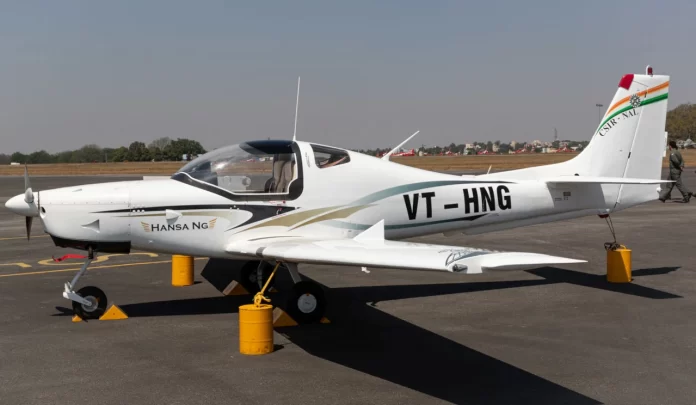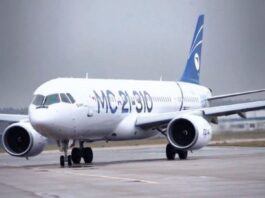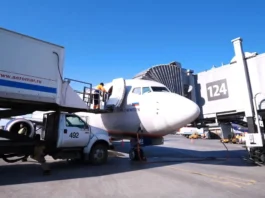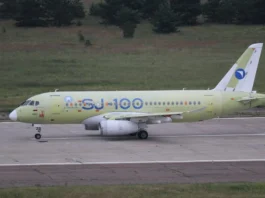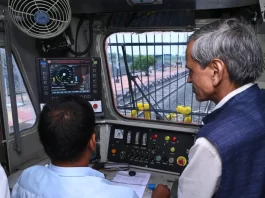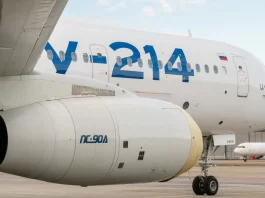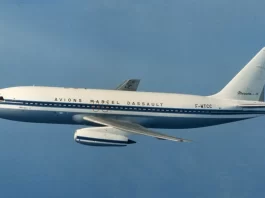On April 4, the Council of Scientific & Industrial Research (CSIR) passed on the technology of the HANSA-3(NG) trainer aircraft, which was indigenously designed and developed, for Commercial Pilot Licensing (CPL). Pioneer Clean Amps Pvt. Ltd. has been granted the license to operate the HANSA-3(NG) two-seater trainer aircraft.
The Hansa-3(NG), which was developed by the CSIR-NAL in India, is a modernized variant of the original Hansa-3 trainer aircraft. It is intended for primary flight training, recreational flying, and pilot certification. It is equipped with an aerobatic-capable airframe, a glass cockpit (Garmin G3X), and a Rotax 912 iSc 3 engine (100 hp). It is positioned as a cost-effective, locally manufactured trainer for India’s expanding aviation sector, with a maximum speed of approximately 220 km/h and a range of approximately 800 km. Modern user requirements are satisfied by the aircraft’s bubble canopy, which has a cabin width of 43 inches (1.09 m) and electrically operated flaps. It provides exceptional performance, with a maximum cruise speed of 98 Knots Calibrated Airspeed (KCAS) and a maximum endurance of 7 hours.
Order Intents
CSIR-NAL officials have reported that the institution has received Letters of Intent (LOI) for over 110 HANSA-3 (NG) aircraft from aviation training organizations throughout the nation. To satisfy the domestic demand and export potential, CSIR-NAL has formed a partnership with Pioneer Clean Amps Pvt. Ltd., Mumbai, to establish a manufacturing facility. The facility is expected to produce 36 aircraft annually, with the potential to increase to 72.
Competition
The equivalent aircraft worldwide are the Pipistrel Virus (Slovenia), Cessna 162 Skycatcher (USA—discontinued), Diamond DA20 (Austria), SM-92 (Russia), Tecnam P2008 (Italy), and TL Ultralight Stream (Czech Republic).
The Cessna 152/172, HAL HPT-32, and imported Diamond DA40s are the aircraft that are currently in use by Indian flying training organizations (FTOs). The Hansa-3 (NG) provides a cost-effective and fuel-efficient alternative to legacy trainers, with a cost of approximately Rs 2–3 crores, modern Garmin G3X avionics, and a Rotax 912 engine. Additionally, its operating costs are reduced to ₹8–10K/hour. The Hansa-3(NG) has the potential to dominate the Indian trainer market and even compete globally against competitors such as Tecnam and Pipistrel, although challenges such as adoption resistance and scaling production persist.
A confluence of technical limitations, market dynamics, and policy challenges resulted in the limited success of the Hansa-3’s earlier versions (pre-NG). The original Hansa-3 (1990s) was equipped with less efficient engines (Lycoming O-235), older avionics, and a reduced cruise speed (~185 km/h) in comparison to imported competitors such as the Cessna 152. The absence of modern features, such as glass cockpits, reduced the attraction for contemporary pilot training.
In the next few years, India will require 30,000 pilots, a significant increase from the current 6,000–7,000 pilots. This boost is because Indian airlines have collectively ordered over 1,700 aircraft. At present, India’s commercial aircraft fleet comprises more than 800 aircraft. Typically, 15–20 pilots are required for narrow-body aircraft, while 25–30 pilots are required for long-range wide-body fighters. Therefore, it is imperative to establish a world-class ecosystem for flight training in the nation.
Hansa 1 and 2
The Hansa-1 and Hansa-2 were the first attempts by India’s National Aerospace Laboratories (NAL) to develop indigenous light aircraft; however, neither was operationally successful. The Hansa-1, a two-seat, high-wing aircraft, was first introduced in 1972 and was powered by a Lycoming O-320 engine. Due to competition from established imports such as the Cessna 172, it was unable to attract buyers despite being designed for light utility and training duties. The project was canceled due to the absence of military or civilian orders, and only one prototype was built. The Hansa-1 was predominantly used as a proof-of-concept project, which underscored the difficulties associated with the development of viable indigenous aircraft in an import-dependent market.
Designed for light transport and training, the Hansa-2 was a more ambitious four-seat aircraft in 1988. It was designed to overcome the constraints of its predecessor by incorporating a Lycoming IO-360 engine. As a result of structural flutter, the prototype crashed during a test flight in 1990, revealing critical design deficiencies. The disaster led to the abandonment of the project, a setback to India’s ambitions to develop a domestic trainer aircraft. The Hansa-2’s early failure was never recovered, highlighting the challenges of transitioning from experimental prototypes to mass production, in contrast to the HAL HPT-32 Deepak, which only saw limited military adoption.
The Hansa-1 and Hansa-2 encountered fundamentally systemic challenges. In the 1970s and 1990s, the aviation sector in India heavily favored imported aircraft, leaving little space for untested indigenous designs. Furthermore, the absence of military support, in contrast to programs like the HPT-32, resulted in the absence of a guaranteed market for these aircraft. Structural weaknesses further eroded confidence in NAL’s initial designs, as the Hansa-2 disaster demonstrated. Nevertheless, these failures served as valuable lessons for subsequent projects, such as the Hansa-3 and its next-generation variant, the Hansa-3NG, which are designed to integrate contemporary technology with cost-effective production to ultimately enter the Indian trainer aircraft market.
